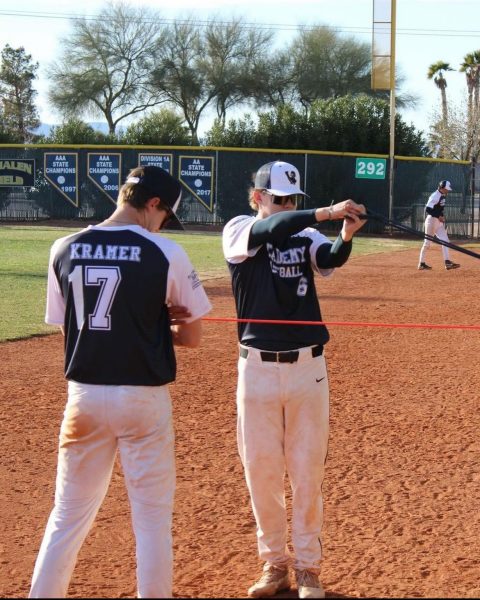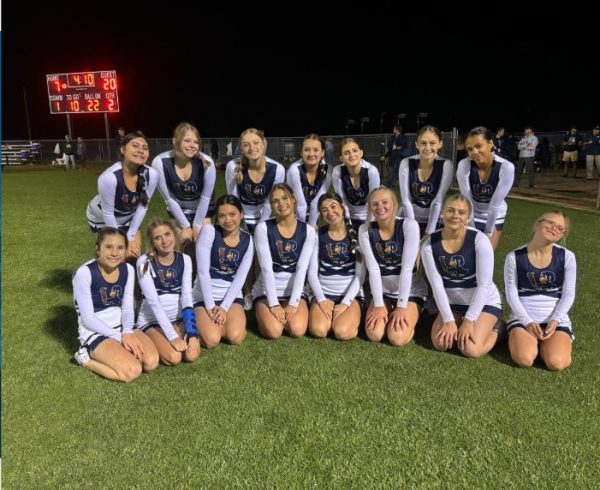Inequality Reaches the Limit
Before the Title IX legislative clause in 1972, a women’s movement to prevent discrimination at the collegiate level and beyond, gender bias rippled through college campuses around the United States. Before this movement, women were considered too weak to run, sweat, or participate in aggressive sports. One woman who attended a high school in the 1960’s said, “Our gym teachers told us not to run too fast or we would hurt ourselves. She said we should try not to sweat.”
Because of the bias presented toward women before the 1960’s, women felt the need to fight back. Title IX’s intent was to reduce gender discrimination by requiring federally funded educational institutions to provide equal opportunities for both women and men.
In the 1967 Boston Marathon, America’s most prestigious marathon, Katherine Switzer entered the marathon as K. Switzer giving the illusion that she was a boy. On race day, Boston Marathon official, Jock Semple, jumped off the lead press truck and ran at Switzer while she was racing in an attempt to tear off her number. “Get the hell out of my race and give me that number!” shouted Semple. However, her coach, Arnie Briggs, and boyfriend, Tom Miller, prevented Semple from succeeding and Switzer became the first female to finish a marathon, and a rare success story of a modern Mulan.

Photo via https://commons.wikimedia.org under the Creative Commons license. https://www.google.com/search?as_st=y&tbm=isch&hl=en&as_q=Title+IX&as_epq=&as_oq=&as_eq=&cr=&as_sitesearch=&safe=active&tbs=sur:f#imgdii=Mr4ww0vXr7XnHM%3A%3B2wTVq1GwzqmQtM%3A%3B2wTVq1GwzqmQtM%3A&imgrc=2wTVq1GwzqmQtM%3
In the Title IX provision it is stated that, “No person in the United States shall, on basis of sex be excluded from participation in, be denied benefits of, or be subjected to discrimination under any education program or activity receiving Federal financial assistance”.
After Title IX was enacted, female participation grew widely from 30,000 varsity female athletes in 1971-1972 to 166,000 athletes in 2004-2005. Many schools fought the Title IX ruling in fear of the reverse effect on men’s sports. The conflict brought on by Title IX creates two opposing viewpoints about whether or not Title IX is still needed today.
When faced with the question of Title IX’s necessity in today’s world, many under-funded male athletes will confirm it’s far from flawless. Sara Foley says, “The program [Title IX] has transformed into having the reverse effect on men’s sports, which have experienced budget cuts or have had their programs eliminated altogether.”
The program has two sides to its story, and in the minds of many, successful men’s sports shouldn’t be cut for the sake of staying within the law’s boundaries. Many eliminated men’s teams may feel discriminated against due to the assumption that Title IX is only for women. Legislation demanding equality will only bring about ineffective results, such as the unnecessary addition of women’s programs strictly for purpose of equality. At Providence College, three men’s sports were scratched to allow room in the budget for female programs that have drawn slight interest. One suggestion is to permit a campus survey to assess student interest, and establish school programs based on the outcome. Then women’s programs will continue to enlarge, with or without legislation to enforce its expansion.
School’s fought the ruling due to the loss of their main revenue, men’s sports, because they thought women weren’t as interested in athletic programs. Title IX critics argue that by forcing educational institutions to meet certain quotas, it may not adequately reflect the desires of the community.
Yet, even after the Title IX ruling in 1972, participation, opportunities, and rewards still today lag behind that of men’s in specific areas. Now even though women’s sports have increased exponentially, women’s pay still falls way behind that of men’s.
An average salary for an N.C.A.A. Division one men’s coach in any sport increased sixty-seven percent to $267,007 from 2003 to 2010. By contrast, an average salary for a women’s coach increased by sixteen percent to $98,106. Robert Lattinville, represents numerous coaches, when saying, “In most cases, the coaches of women’s basketball teams earn about one-half or one-third of the amount of the men’s basketball coach.”
Although athletic-related Title IX Issues cover the headlines, what goes on beneath the public’s eye has caught the attention National Academy of Sciences, NAS. Title IX also covers several other areas’ of higher education, employment, standardized testing, and most importantly, science. A study done in 2007 to ensure compliance with Title IX has shown that the evident participation among men and women in science-related disciplines was largely due to discrimination.
As girls participation in sports grows due to higher interest, Title IX provides support in one area where society fails. The provision makes post college opportunities present to women interested in athletic participation at the professional level.
Even as men’s teams are cut, male sports continue to grow. Boy’s participation grew thirty-one percent from 1972-2005 by 52,000 athletes’. Despite the fact that schools counter argued Title IX for the sake of men’s sports, women’s interest in athletics grew considerably more than the school’s originally thought they would. A massive increase of female competitors from 1972-2005 by four hundred fifty-six percent to 166,000 participants from 30,000 participants brought on a huge demand for girl’s teams. In order to feed the sudden increase of demand, a necessary amount of men’s teams were removed.
Even though Title IX has certain drawbacks, the law protects women’s rights to perform, coach, participate, and succeed at the same level as men.

I am currently a Senior at Air Academy High School and Senior Sports Editor of the Jetsream Journal. I kinda like math and sometimes I run, a lot. I eat...














Lilliana Hamilton • Oct 26, 2015 at 10:41 am
This is a well thought out article! Keep up the good work!
Tali Valentine • Oct 26, 2015 at 10:32 am
This is really well written and interesting to read! Good job Katie.